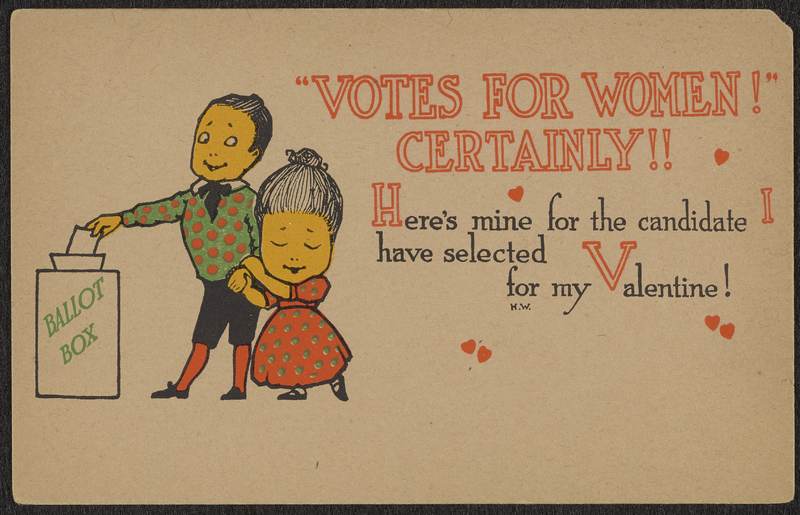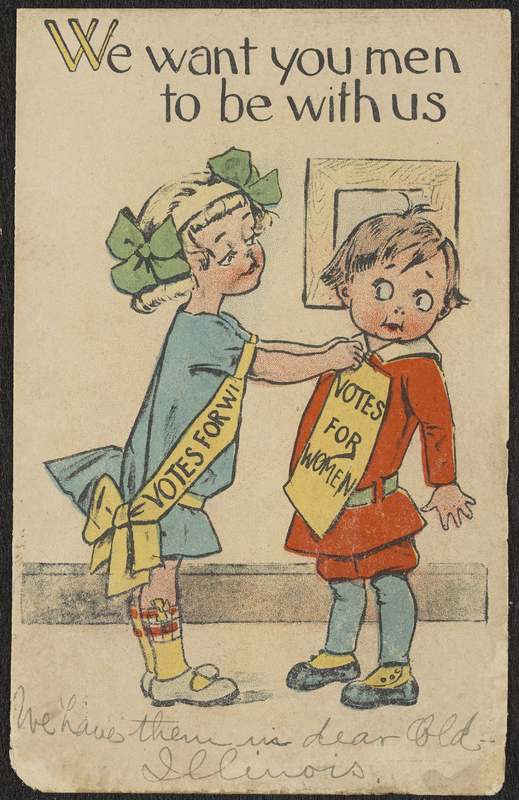Suffragists as Persuaders & Proselytizers
Successful social movements must be able to recruit new members to the cause; suffrage was no exception. In particular, many suffragists recognized the need to convince men into supporting suffrage. After all, most legislators (i.e. those with the capacity to propose new laws) were male, and any amendments to federal law would have to be passed by male voters. Some powerful men also had financial resources unavailable to most women. Thus, proselytizing suffragettes interacted with men, ranging from family and community members to local politicians, to advocate for their cause. This selection of postcards provides unique insight into how suffragists were depicted as persuaders and proselytizers in early 20th-century media.
Siyuan Feng, curator
Votes for Women! Certainly!!
The man in this postcard votes for a pro-suffrage candidate to support his (suffragette) Valentine. This page explores how his Valentine might have convinced him to make such a choice, using evidence from contemporary media.
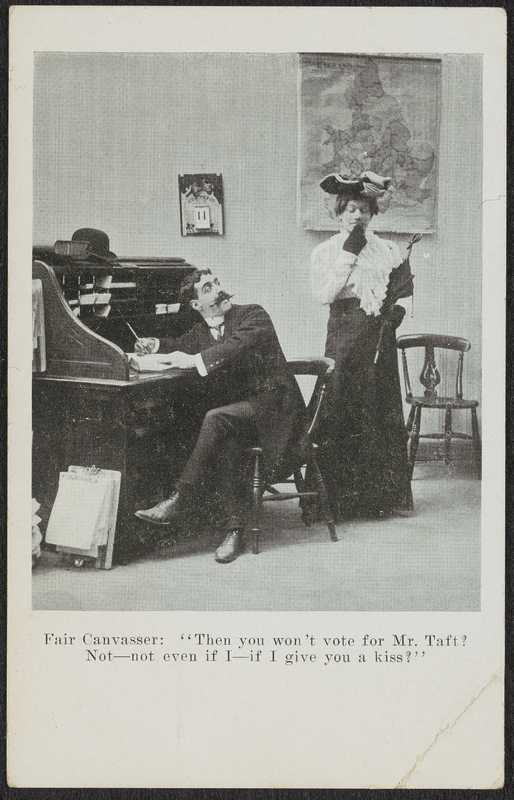
Vote for Taft
The suffragettes in this and the following two postcards are portrayed as beguiling young women proffering affection to alter the political decisions of men. The men are thus ostensibly charmed into supporting the suffrage movement. An anti-suffrage reading of these postcards suggests that there is little to no coherent rationale behind giving women the vote, and that the men who support the cause have been duped by the enchantments of these lovely suffragettes.
This comic postcard shows a man dressed in suffragette drag, offering a kiss if the man at the desk will cast a vote for Taft. However, Taft was opposed to extending the right to vote to women.
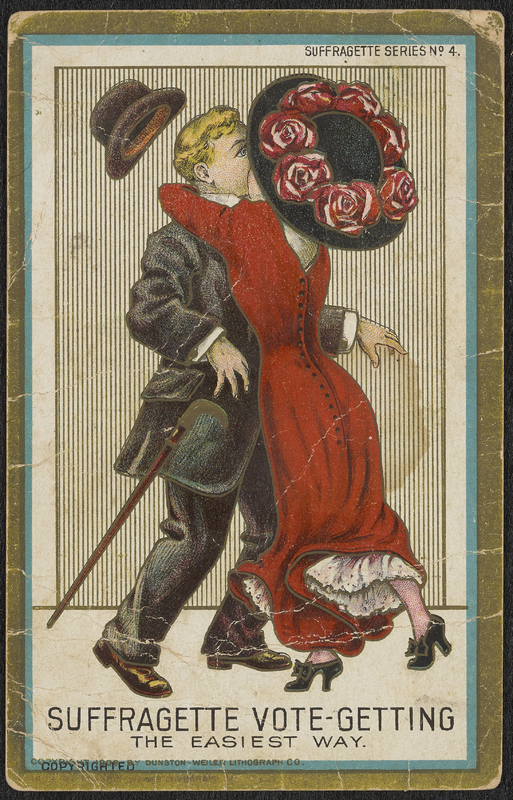
The Easiest Way
A scandalous suffragette assaults a poor man, charming him into senselessly supporting suffrage. The implication: There is little rationale behind allowing women to vote. The suffragettes have no coherent arguments to give, and the men who support suffrage have simply been manipulated.
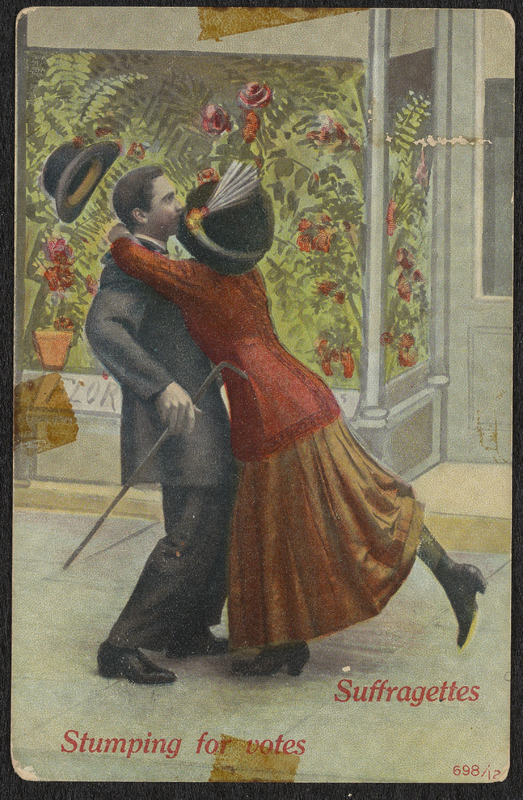
Stumping for Votes
This depiction appears to have some grain of truth:
"The Wellesley College girls, altho 'every man of’em' is for woman suffrage, have done what every decent woman in the country will do—set the stamp of feminine disapproval on the suggestion of a leading New York suffragist that pretty girls should be sent to legislatures to exchange kisses for votes with statesmen. The Wellesley objection is summed thus by Miss Emily Balch, one of the college instructors: 'If women cannot win votes except by bartering away their self-respect and kisses then suffrage must remain a dead issue. The idea of such a suggestion should be displeasing to any woman. The legislator with as little sense as to be cajoled by a strange woman’s caresses doesn’t belong in a lawmaking body. If women cannot get their rights by stating their case openly and truthfully, and showing that their position and demands are lawful ones, then let suffrage die in its infancy.' Such slogans as 'a kiss for a convert' would in time eliminate even respectability from the universal suffrage movement. Such tactics are disgusting."
From The Christian Work and Evangelist, New York, 1910.
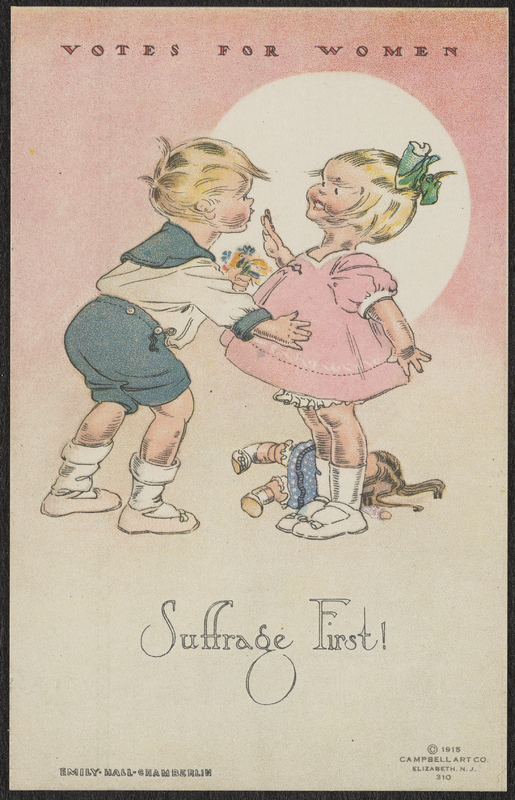
Suffrage First!
A similar message is found even on postcards manufactured by pro-suffrage entities, like this example from the National Woman Suffrage Publishing Company. The image once again implies that women supporting suffrage can apparently encourage men to join their cause by bequeathing affection, or withholding it.
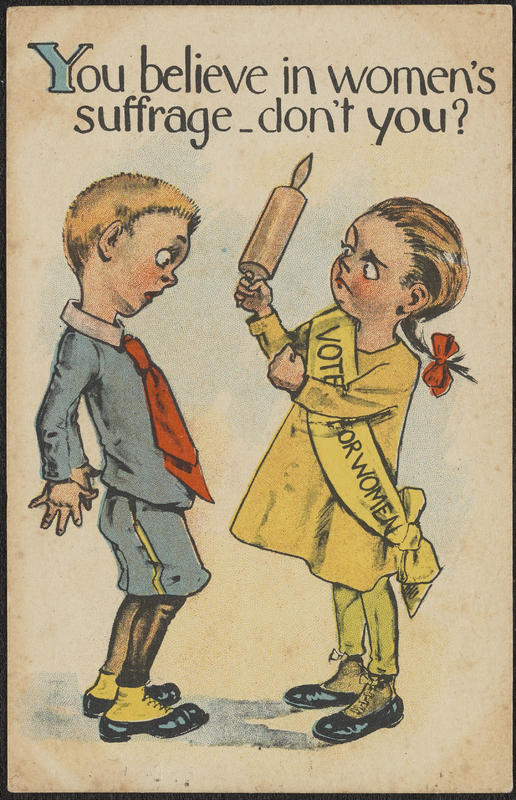
You believe in women's suffrage - don't you?
Although no physical violence is explicitly portrayed, intimidation is still clearly depicted on this postcard. The viewer is led to presume that the suffragette is not as sweet as she seems. The message remains the same: the boy has been unwillingly coerced into supporting suffrage.
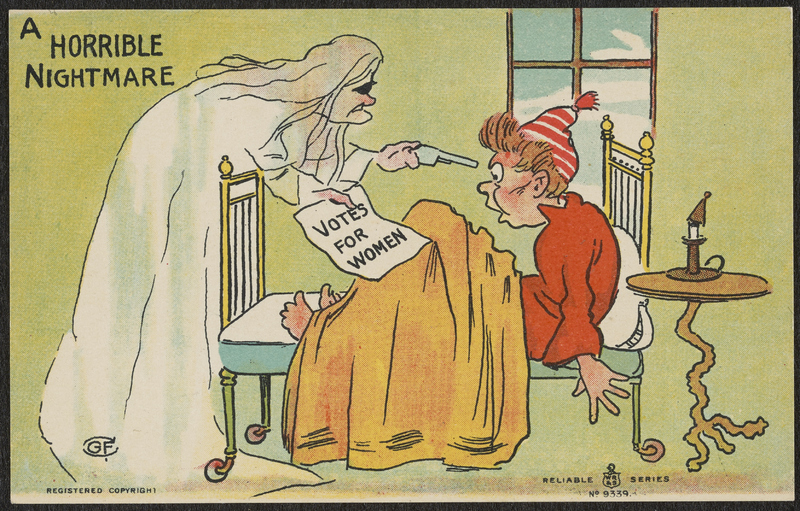
A Horrible Nightmare
In this postcard and the one preceding it, we see suffragettes portrayed as nasty, violent women, a trope commonly found in anti-suffrage media. These women were depicted as threatening those around them into supporting suffrage. Men, particularly husbands, were often portrayed as their victims.
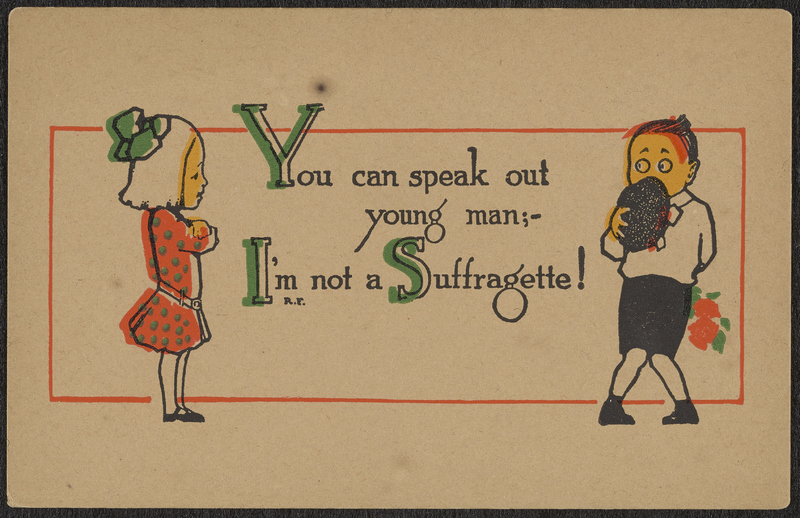
You Can Speak Out Young Man
The intimidation present on the two postcards above is clear, even if physical violence is not explicitly portrayed. The scared young boys clearly represent men who might be coerced into supporting the suffrage cause.
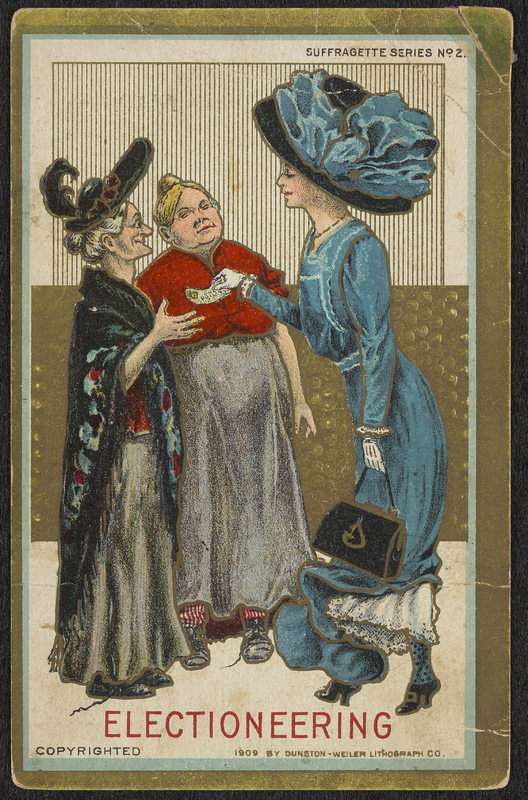
Electioneering
Pro-suffrage organizations such as the National Women’s Party (NWP) sought to portray suffragettes in a positive light, as a direct response to the “nasty, violent suffragette” trope. Thus, cartoons by pro-suffrage artists like Nina Allender began to show suffragettes as poised and elegant young women.
These depictions became widespread in the NWP’s magazine The Suffragist, and became subsequently known as “Allender girls.” Allender girls advocated for the suffrage cause through peaceful and eloquent argument. Here, an elegant woman approaches receptive strangers to promote and raise awareness for the suffrage cause. This is likely how the suffragettes would have preferred to present themselves, but a bribe is clearly being given.
